I just started with R and time series forecasting. I am doing forecasting for 1 variable (consumption) and one exogenous variable (income). This is quarterly data. When I ran the model with R code,
#train_exp <- exp_trial[,1][1:150]
#train_inc <- exp_trial[,2][1:150]

model_train_exp <- arima(train_exp,order = c(0,2,6),seasonal = list(order=c(0,1,1),period = 4), xreg = train_inc)
this model has no errors. but, when I forecast it, i get an error xreg' and 'newxreg' have different numbers of columns
forcasted_arima <- forecast.Arima(model_train_exp, h=14)
there are so many arguments for forecast.arima. I am not familiar with those. Can someone please tell me what should be the code for it?